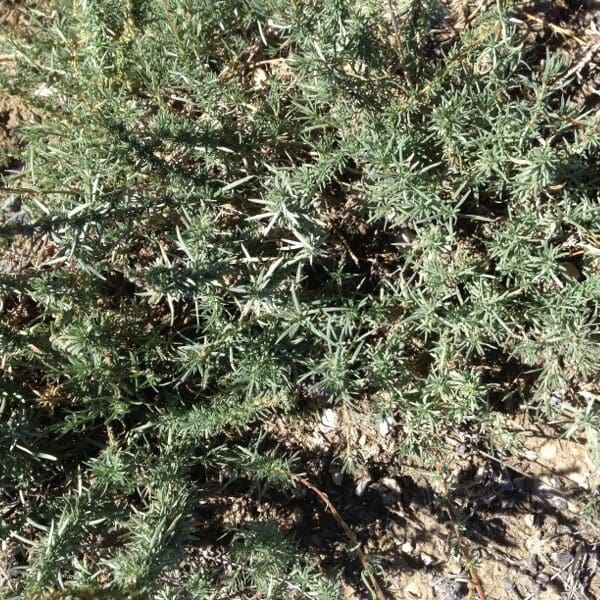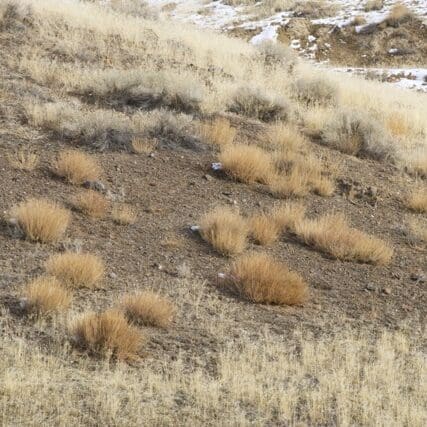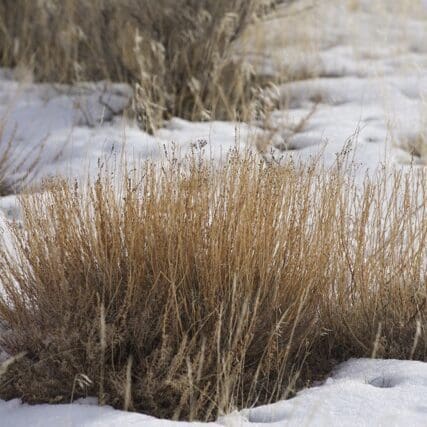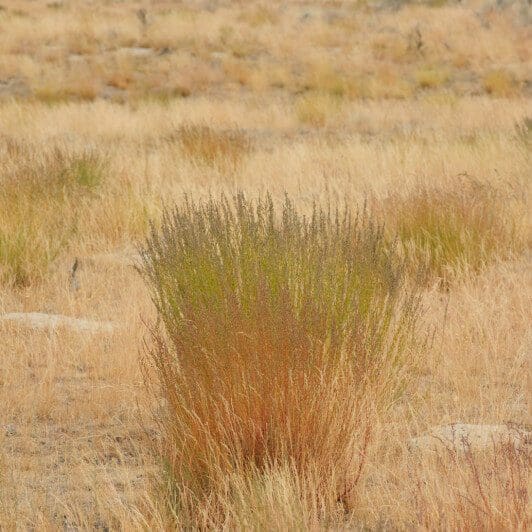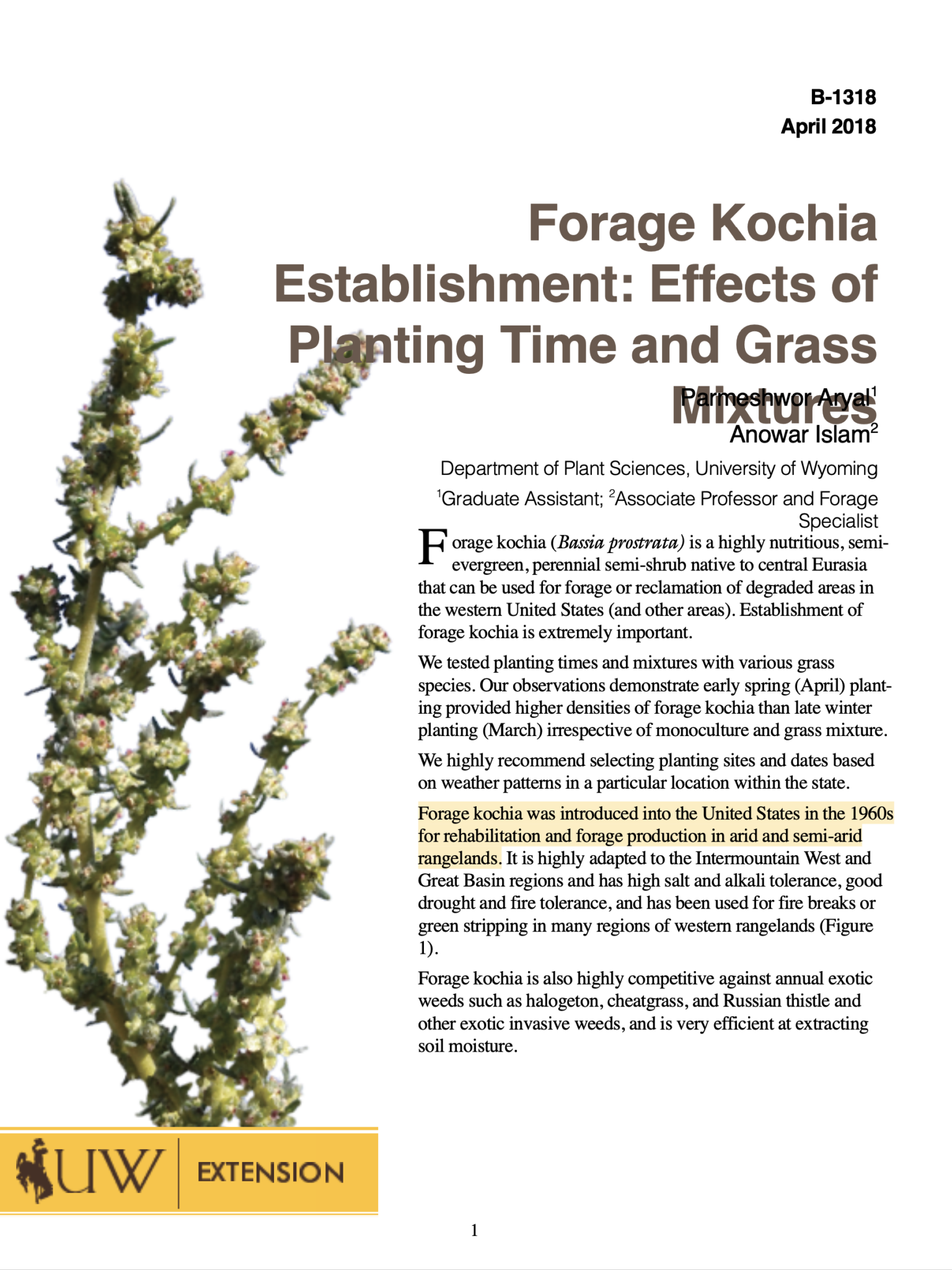

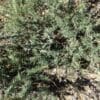

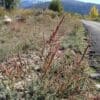






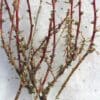




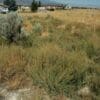






Immigrant Forage Kochia
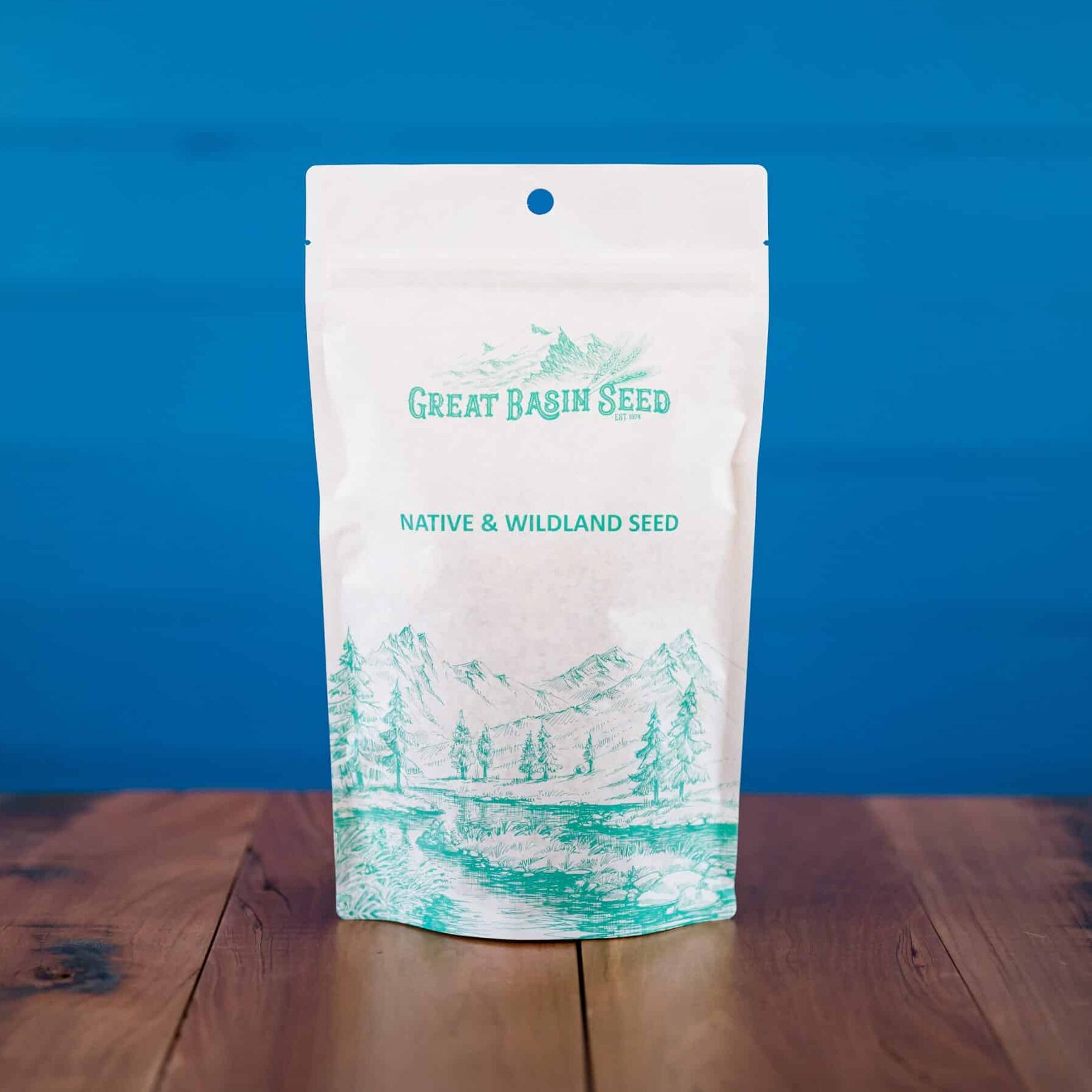 $2.50 – $20.00
$2.50 – $20.00
Please call for availability
- Scientific name: Bassia prostrata
- AKA Kochia prostrata
- Well adapted to U.S. rangelands
- Very Drought tolerant
- Will grow on as little as 6″ annual precipitation
- Salt and alkali tolerant
- Recommended in mixes for saline soils and badlands
- Thrives during hot dry conditions
- Excellent for fire breaks
- See also Snowstorm Forage Kochia
Immigrant Forage Kochia (Bassia prostrata) or prostrate kochia is native to the heavily grazed rangelands of Central Eurasia in Kazakhstan and Uzbekistan. It is an evergreen subshrub excellent seed for fire breaks and is adapted to a wide range of harsh, low fertility sites. Characteristics include:
- Long-lived, perennial, semi-evergreen half-shrub
- Well adapted to U.S. rangelands.
- Drought tolerant. Will grow on as little as 6 inches annual precipitation
- Salt and alkali tolerant.
- Recommended as a component in seed mixes for saline badlands or challenging soil conditions
- Thrives during hot dry conditions
- Excellent winter forage, high in protein
- Excellent for fire breaks
Immigrant Forage Kochia is a Great Basin Seed specialty. The first selections were studied at the Great Basin Experimentation Station by A. Parry Plummer and Richard Stevens, Great Basin Seed family member and plant botanist for the Utah Fish & Game. The selections were later planted at locations in Utah and Nevada where we harvest them in a wild land setting every fall. Great Basin Seed is one of the largest purveyors of Immigrant Forage Kochia in the United States.
Uses:
The high cost of winter feed and quality forage is a major challenge for beef producers in the Western United States. During winter, dormant grasses are high in energy (fiber) but low in protein. Forage Kochia provides a solution to this winter feed conundrum. It is high in protein and has good digestibility. Forage Kochia is a wintergreen. It blossoms late summer and sets seed in November. Remains green throughout the winter months and starts new leaves in late December. It is unrivaled for winter range feed value and produces well in arid conditions.
Forage kochia (Bassia prostrata AKA Kochia prostrata) is different from the weedy Annual Kochia (Kochia scoparia) that many despise. They are NOT the same and should not be confused. Snowstorm Forage Kochia (Bassia prostrata grisea) is a new release that boasts tall stems that rise above snowpack that would otherwise bury the Immigrant variety.
Because Immigrant Forage Kochia is a perennial, it is non-invasive to native perennial plant communities, and it does not cause nitrate or oxalate toxicity. Forage kochia out-competes many noxious annual weeds including halogen and cheatgrass. Once it has replaced cheatgrass, perennial native species can re-establish in the stand of forage kochia, thus leading to diverse, stable perennial plant communities.
When to Plant:
Best results are achieved when sown in winter months. Mid December through March 1 are generally best. Conditions are generally ideal in January and February. Condition (harrow or some form of agitation) your ground in the fall as weather permits then sow seed over snow or in cold bare ground. We do not recommend sowing at any other time of year.
Immigrant Forage Kochia as a Fire Break:
Forage Kochia is and excellent seed for fire breaks. It is fire resistant and a key component in the fight against cheet grass wildfires in the west. It will compete with cheet grass for early spring moisture but it is not invasive and does not spread aggressively. Where Kochia is established it will out compete cheet grass and create visible borders, simultaneously creating a green fire break and reducing the overall flammable biomass. It is an evergreen and has succulent leaves most of the year but reaches peak greenery late summer when annual grasses and understory dry out and become a fire hazard. It is very effective and valuable for green-striping on western rangelands.
Our Kochia is collected every fall (November) and stored in freezers to preserve germination.
Scientific Name: Bassia prostrate ssp. vivescens or Kochia prostrata
***Click on the “Quick Plant Facts” tab above for more information.
Forage Kochia USU Research Report 162
“Its Compatibility and Potential Aggressiveness on Intermountain Rangelands”
Forage Kochia USU Research Report 162
PDF version of Utah Agricultural Experiment Station Research Report 162
Prepared By: R.D. Harrison, N.J. Chatterton, B.L. Waldron, B.W. Davenport, A.J. Palazzo, W.H. Horton, and K.H. Asay
Department of Sciences, University of Wyoming
“Forage Kochia Establishment: Effects of Planting Time and Grass Mixes”
Department of Sciences, University of Wyoming
B-1318, April 2018
Helpful Links
Additional information about this product can be found on the academic websites linked below.
Synonyms
Many plants have more than one common and scientific name. We've listed a few of them below.
- Immigrant Forage Kochia
- Kochia prostrata ssp.
- Prostrate Kochia
Best Kochia establishment is achieved with dormant late fall or winter seedings which allow the seed to germinate and begin growth very early in the spring. Seed should be broadcast, aerially seeded, or drilled onto a soil surface that has been lightly disturbed by harrowing. Kochia can be spread directly onto snow – a very successful seeding method. Seed drilled and/or pressed into soil to depths more than 1/16 inches (1.5 mm) will rarely germinate or establish. DO NOT BURY SEED!!
For wildlife plantings, forage kochia should be used as part of a seed mixture. In mixes, seeding rates range from 0.025 to 0.25 lb PLS per acre depending on conditions and objectives. Planting 0.025 lb PLS per acre as a seed mixture component usually provides approximately 400 plants per acre.
For greenstrip plantings or where forage kochia is planted as a monoculture with a drill and seed is pressed into soil, higher seeding rates (2.0 – 3.0 lb/acre or 18 to 27 seeds/ft2) are recommended to create a thick stand of kochia with smaller, lower-growing plants, which provide little fuel for wildfires and reduces annual weed production. Under greenstrip conditions, when seed is broadcast planted, seeding rates should be increased to 3.0- 4.0 lb/acre or 27 to 36 seeds/ft2.
Generally speaking, snow on the ground is a good indicator that you are still within the “safe zone” for planing Immigrant Forage Kochia. If snow is not present, keep sowing times within the months of January and February, preferably in freezing temperatures.
Quick Plant Facts
| Root Form: | Taproot |
|---|---|
| Origin: | |
| Min. Precipitation: | 6 inches |
| Best SowingTime: | Mid Dec – Late Feb |
| Sowing Rate: | 3-4 pls lbs. per acre |
| Seed Count: | 400,000 |
| Growth Height: | |
| Lifespan: | |
| Plant Type: | |
| Sun & Shade Tolerance: | Full Sun |
| Select a Package Size and Quantity | 1 oz. Envelope, 4 oz. Pouch (0.25 lbs.), 8 oz. Pouch (0.50 lbs.), 1 lb. (by the pound) |

